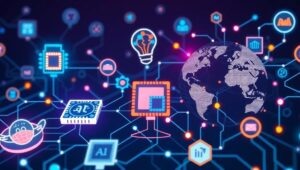June 1, 2025
Testing and Validation of Large-Scale IoT Systems (2026 Challenges)
Testing and Validation of Large-Scale IoT Systems: Challenges in 2026 The Internet of Things (IoT) has rapidly evolved, connecting billions of devices across various sectors, from smart homes to industrial automation. As we approach 2026, the scale and complexity of these systems present significant challenges in testing and validation. Ensuring the reliability, security, and performance of large-scale IoT deployments is crucial for realizing their full potential. This article explores the key challenges and potential solutions for testing and validating IoT systems in the coming years. The Expanding Landscape of IoT By 2026, IoT systems will be characterized by: Increased Scale:








